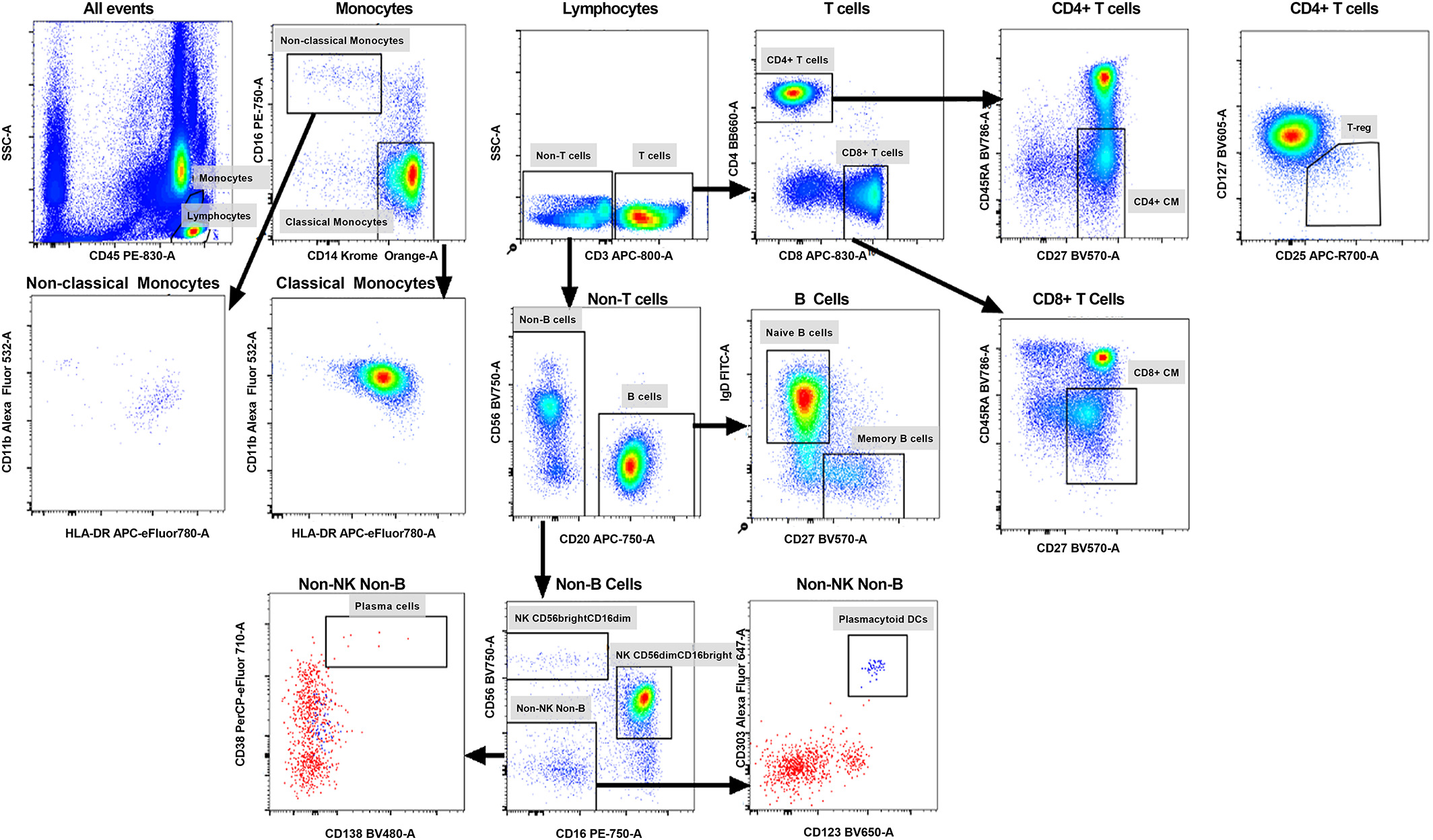Scientists are currently moving rapidly from the use of polychromic flow cytometry, the preferred technology for 45 years, to spectral flow cytometry, which now represents the most significant change in the half-century since flow cytometry was developed. Spectral flow cytometry uses prisms or diffraction gratings to disperse the emitted light of a fluorescent marker across a detector, allowing the full spectra from each fluorochrome to be measured. This allows for high-dimensional panels of 30-40 colors and the application of more biological markers with near-infrared (NIR) emission beyond 800 nm. Currently, the commercially available fluorochromes capable of emission in the NIR spectral region are limited.
Seong et al. address this dearth of NIR-emitting dyes in a concise Cytometry article in which they report the engineering process and experimental application of six novel tandem fluorochromes: PE-750, PE-800, PE-830 for the 488 nm laser, and APC-750, APC-800, APC-830 for the 640 nm laser. These novel compounds were designed and produced by covalently linking a protein donor dye (APC or PE) with an organic small molecule acceptor dye. Each of these conjugates was then shown to be compatible with fixation and permeabilization, demonstrating adequate brightness and stability when conjugated to antigen-specific monoclonal antibodies, as shown by a successful 34-color spectral flow run (Figure 1). Biotium’s CF®680 Dye was included in the high-dimensional analysis for labeling anti-human CCR6.
Notably, the authors also mention that Biotium’s new series of NIR fluorescent dyes (CF®800, CF®820, CF®850, CF®870) that include PEG modifications could drastically enhance the water solubility and brightness of tandem NIR fluorochromes. As demonstrated, the development of novel tandem fluorochromes, such as Biotium’s novel Astral Leap™ tandem dyes, will greatly increase the number of simultaneous parameters on a spectral flow cytometer. In fact, it is expected that these types of advancements will contribute to what has been termed second-generation spectral flow cytometry becoming the new industry standard (Robinson, 2022). Second-generation spectral flow will combine novel dye and sensor technologies to allow a combination of cell cycle, metabolic and structural analyses of single cells along with standard immunophenotyping analyses.
Figure 1. Demonstration of the 34-color flow panel. Major immune cell subsets were gated using 2D dot plots in SpectroFlo®—the default analysis software package on the Cytek® Aurora cytometer. The figure panels show 2D dot plots for immune cell subsets from human whole blood. Certain immune cell subsets were gated by cell-lineage markers. CM central memory; Treg, regulatory T cells. Credit: D. Seong, et al. https://doi.org/10.1002/cyto.a.24537 reproduced under the CC BY-NC-ND 4.0.
Learn more about Biotium’s high-performance CF® Dyes, as well as Biotium Choice primary antibodies. These validated primary antibodies were designed for flow cytometry and are available with CF® Dyes and novel Astral Leap™ tandem dyes.
Full Citations
Seong, Y., Nguyen, D. X., Wu, Y., Thakur, A., Harding, F., & Nguyen, T. A. (2022). Novel PE and APC tandems: Additional near‐infrared fluorochromes for use in spectral flow cytometry. Cytometry Part A, 101(10), 835-845. https://doi.org/10.1002/cyto.a.24537
Robinson, J. P. (2022). Flow cytometry: past and future. BioTechniques, 72(4), 159-169. https://doi.org/10.2144/btn-2022-0005
SpectroFlo and Cytek Aurora are registered trademarks of Cytek.


